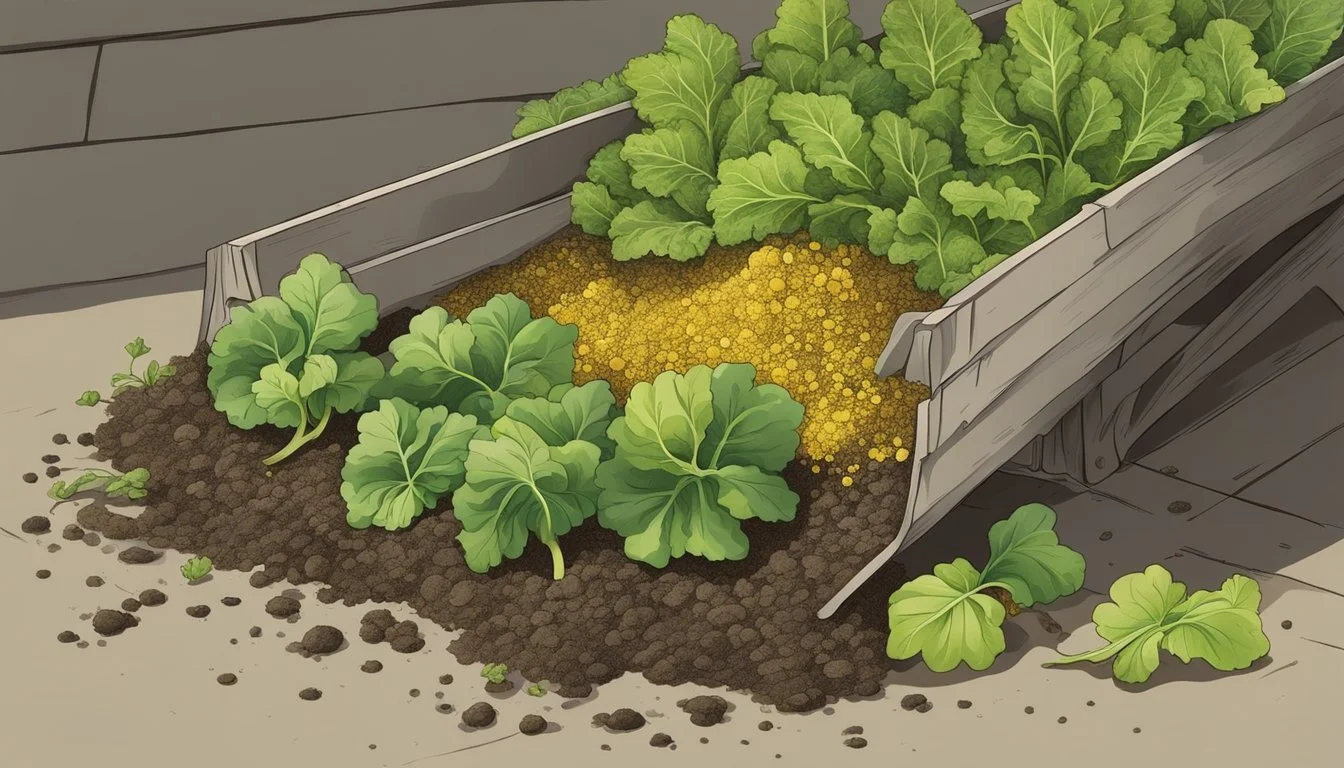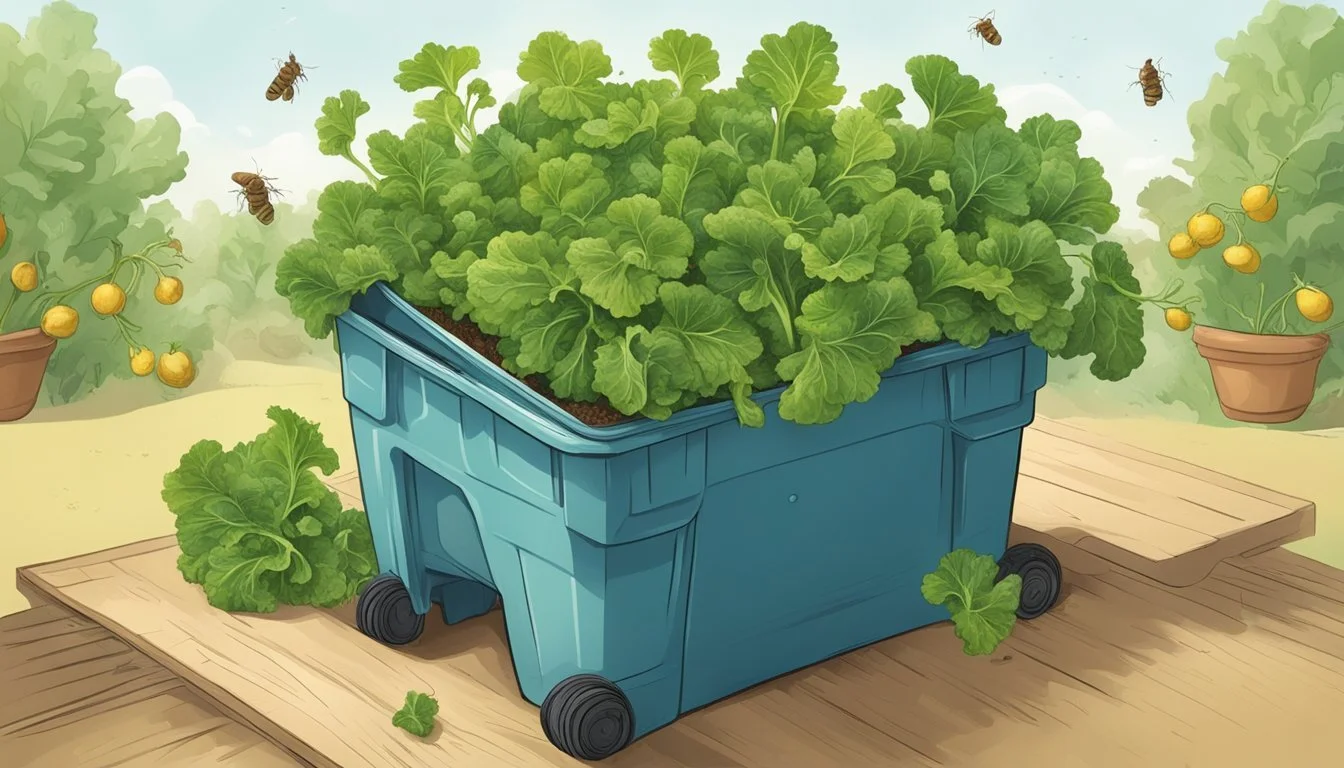Can You Compost Mustard Greens?
A Guide to Eco-Friendly Disposal
Mustard greens, being rich in nutrients and organic matter, are excellent additions to a compost pile. These leafy greens decompose relatively quickly due to their high nitrogen content, providing beneficial bacteria in the compost with the energy they need to break down organic material. The process of composting these greens is straightforward: gardeners simply need to ensure that the greens are mixed in with a good balance of 'browns' - carbon-rich materials like dried leaves, straw, or paper - to maintain an optimal carbon-to-nitrogen ratio in the compost.
It is noteworthy that composting mustard greens requires some attention to detail. Large quantities of these greens, or indeed any material, should not dominate the compost pile, as this can lead to an imbalance that hinders efficient decomposition. Instead, they should be layered into the compost, ideally chopped or shredded to speed up the breaking down process. Additionally, as with any composting practice, maintaining the compost pile with adequate moisture and regular turning will facilitate the creation of a rich, humus-like material beneficial for garden soils.
Can You Compost Mustard Greens?
Mustard greens, the leafy parts of the Brassica species, are not only edible but they are also an excellent addition to compost. Rich in nutrients, these greens decompose well and contribute to the creation of a rich, fertile compost.
When adding mustard greens to a compost pile, one should consider the nitrogen balance. Mustard greens are considered a "green" compost material, which means they are high in nitrogen. It’s important to balance this with “brown” materials, which are high in carbon, to avoid a compost that is too nitrogen-heavy leading to a smelly, slowly decomposing heap.
Steps for Composting Mustard Greens:
Chop the greens: Smaller pieces decompose more quickly. This is true for most edible materials introduced into compost.
Balance with browns: Pair the mustard greens with carbon-rich materials like dried leaves, straw, or newspaper shreds.
Layering: Incorporate layers of mustard greens between the layers of brown materials to promote airflow and manage moisture.
Turn the pile regularly: Aeration accelerates the composting process and evenly distributes the decomposition of materials, including mustard greens.
Keep in mind that if the mustard greens were treated with pesticides or herbicides, they may harm the beneficial microorganisms in the compost. It is best to use organic mustard greens to maintain a healthy compost pile.
In conclusion, mustard greens can be a valuable addition to the compost pile, enhancing the final product used to enrich garden soil.
Benefits of Composting Mustard Greens
Composting mustard greens provides an excellent source of organic matter to enrich soil with nutrients. As mustard greens decompose, they add nitrogen to the compost pile, a crucial element for healthy plant growth. The inclusion of these leafy greens in compost helps to create a well-balanced mixture of green and brown materials, which is essential for the composting process.
Mustard greens are particularly beneficial due to their:
Fast decomposition rate: They break down quicker than tougher, more fibrous plant matter.
Rich nutrient content: This contributes to the overall fertility of the compost, and eventually, the soil.
The addition of mustard greens to a compost bin is straightforward:
Chop or tear the greens into smaller pieces to speed up decomposition.
Balance with brown materials, like dry leaves or straw, to maintain a good ratio—generally about 3 parts brown to 1 part green matter.
Stir the compost regularly to oxygenate and mix the materials, facilitating decomposition.
Benefits for the soil include:
Improved Structure: Compost with mustard greens enhances soil aeration and drainage.
Increased Microbial Activity: Nutrient-rich compost stimulates the presence of beneficial microorganisms.
When composted properly, mustard greens transform into a valuable amendment that enhances the quality of garden soil. They support a sustainable gardening cycle where waste is reduced, and the soil's health is continuously revitalized.
Preparing Mustard Greens for Composting
Adding mustard greens to your compost pile is a simple process that aids in waste reduction and soil enrichment. Proper preparation can expedite their decomposition and contribute to a balanced compost.
Chopping for Quicker Decomposition
One should chop mustard greens into smaller pieces before adding them to the compost pile. Smaller pieces have a greater surface area which speeds up the decomposition process. This is particularly beneficial when dealing with tougher or more fibrous parts of the greens.
Considering Greens to Browns Ratio
When composting mustard greens, one must maintain the appropriate ratio of greens (nitrogen-rich materials) and browns (carbon-rich materials). The ideal ratio is typically 1 part greens to 3 to 4 parts browns. This balance helps in ensuring a healthy composter environment that breaks down materials efficiently without odors. When harvesting mustard greens, their addition should be counterbalanced with brown materials like dried leaves or shredded paper.
Recommended Ratio:
Greens (mustard greens): 1 part
Browns (carbon-rich materials): 3-4 parts
Note: After harvesting, mustard greens can go directly into the compost bin, but remembering to mix them well with the browns is crucial for optimal compost health.
Factors Affecting Composting
The efficiency of composting mustard greens, like any other organic waste, is influenced by several key factors such as temperature, moisture, and aeration, which greatly affect the decomposition process.
Temperature and Climate Effects
Spring and fall present ideal climates for composting due to moderate temperatures that facilitate the microbial activity needed to break down organic matter. In the compost pile, the temperature should be maintained between 140-160°F (60-71°C) to effectively decompose materials while also killing weed seeds and pathogens. Extreme cold can slow down the process, while excessive heat may kill beneficial microbes.
Moisture and Watering Requirements
Compost piles require adequate water to sustain microbes, which should be evenly moist but not waterlogged. The desired moisture level is often compared to a wrung-out sponge. During dry periods, gardeners should add water, aiming for a balance where the compost is neither too dry nor too saturated.
Optimal moisture content: 40-60%
Watering: Adjust according to weather conditions - more in dry, hot periods, and less during rainy seasons.
Aeration and Turning the Compost
Proper airflow is critical for composting. Compaction can reduce aeration, leading to anaerobic conditions that slow down decomposition and may cause unpleasant odors. Turning the compost pile introduces air and helps ensure even breakdown of materials.
Turning frequency during spring/fall: Once every 1-2 weeks
Method: Use a compost fork or aerator to turn materials, mixing the outer portions to the center.
Common Problems with Mustard Greens in Compost
When adding mustard greens to a compost pile, individuals might encounter specific issues relating to diseases and pests, as well as challenges managing odor and maintaining the compost quality.
Disease and Pest Considerations
Mustard greens, while being a component of the compost pile, can bring diseases and pests from the garden. These greens may harbor pathogens and insects that, if introduced into the compost, can survive and potentially infect other plants when the compost is used. To mitigate this, gardeners should avoid composting mustard greens that show signs of disease or infestation. It's also recommended to maintain a high temperature in the compost bin which helps in killing harmful pathogens and pest eggs.
Odor and Maintenance Issues
Composting mustard greens can lead to unpleasant odors if the greens are not properly balanced with browns (carbon-rich materials). The nitrogen-rich greens can create a strong smell if there is insufficient carbon to offset the nitrogen. To maintain a healthy compost pile, one should adhere to the ideal green-to-brown ratio, which is typically around 1 part greens to 3 parts browns. Additionally, regular turning of the compost can prevent odor buildup and facilitates proper decomposition.
Using Composted Mustard Greens
Composted mustard greens serve as nutrient-rich organic material beneficial for garden health and soil vitality. When mustard greens decompose, they transform into a soil-enriching compost that can be utilized in various gardening practices.
As Mulch in the Garden
Mustard greens compost used as mulch provides a protective layer over the soil, helping to retain moisture and suppress weeds. In the garden, this mulch gradually breaks down, releasing nutrients into the soil and improving the overall soil structure. It is particularly effective around plants that thrive in nutrient-rich environments.
As a Soil Amendment
As a soil amendment, compost made from mustard greens enhances the fertility and texture of the garden soil. It introduces beneficial microorganisms and organic matter, making the soil more fertile and workable. Adding this compost to the garden soil can aid in:
Improving drainage in clay soils
Increasing water retention in sandy soils
Balancing pH levels, depending on the original pH of the soil and compost materials
When incorporating composted mustard greens into the soil, it's typically mixed into the top few inches or worked in around plants to support healthy growth and development.







